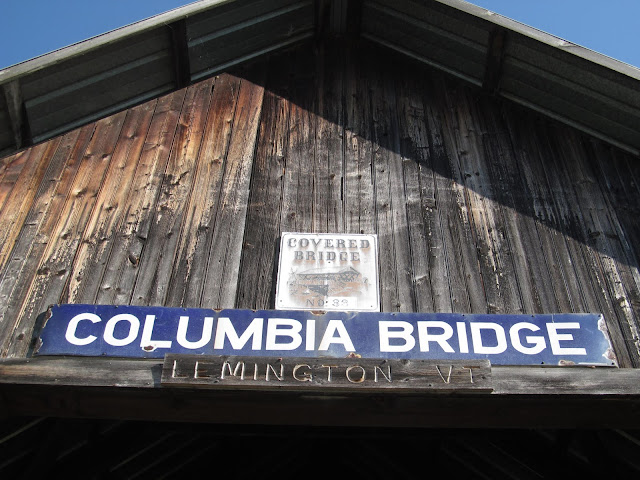The Columbia Covered Bridge is the northernmost of the covered bridges that cross the border between the states of New Hampshire and Vermont. Connecting North Stratford, New Hampshire with Lemington, Vermont over the Connecticut River, this 146 foot long Howe truss designed covered bridge is just four miles south of Colebrook, New Hampshire. The Howe truss design was introduced around 1840 with its combination of wood and iron structural members, represents the transition in construction from wood to iron bridges. The bridge can handle one lane of traffic at a time, as it is only a little over 14 feet wide.
The Columbia Covered Bridge was built in 1912 to replace an earlier bridge that had been destroyed by a fire the previous year. The current covered bridge was built by Charles Babbitt. The bridge was rehabilitated by the State of New Hampshire in 1981 at a cost of $143,000. The Columbia Covered Bridge and the Mount Orne Covered Bridge in Lancaster, New Hampshire are the only highway bridges remaining in the State of New Hampshire which are supported by Howe trusses. Both bridges were completed in successive years (1911-1912) are are also the last covered bridges built on public highways during the historic period of covered bridge construction in New Hampshire and Vermont.
I've visited the Columbia Covered Bridge on more than one occasion. It is in a quiet corner of New England, leaving plenty of time with little distraction to observe and peacefully enjoy the surroundings of the covered bridge. There is also boating and fishing access for the Connecticut River adjacent to the bridge.
 |
| East bridge portal on the New Hampshire side of the Connecticut River. |
 |
| Now on the Vermont side of the covered bridge. The state line is actually on the west side of the Connecticut River, so most of the bridge is in New Hampshire. |
 |
| West bridge portal. The Columbia Covered Bridge is easily accessible from VT 102. US 3 isn't that far on the other side of the river, either. |
 |
| The Columbia Covered Bridge on a glorious summer afternoon. |
 |
| The Connecticut River sure looks inviting here. |
 |
| Inside the covered bridge. |
 |
| Columbia Bridge sign. |
How to Get There:
Sources and Links:
Bridgehunter.com - Columbia Covered Bridge 45-05-02 / 29-04-07
New Hampshire Covered Bridges - Columbia Bridge
Northern Gateway Regional Chamber - Bridges of Coos County


Comments